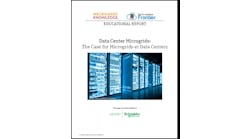Editor’s Note: We were invited to take part in National Geographic’s roundtable discussion, “Has Reliance on Fossil Fuels Irreversibly Damaged the Planet?” Here is our contribution to the discussion.
By Lisa Cohn
Everyday I have the honor of speaking with researchers, scientists and entrepreneurs creating disruptive technologies and programs that are changing the way we use energy.
They include Jigar Shah, founder of SunEdison, who pioneered “no money down” solar energy, unlocking its potential to benefit the masses, and Steve Szablya, co-founder, Kilowatts for Humanity, which brings electricity to rural villages in undeveloped countries, powering lights and cell phones with solar energy.
These pioneers also include Ryan Wartena, founder of Growing Energy Labs (GELI), whose goal is to use state-of-the-art technologies to ensure the world can run on renewable energy; and Lisa Laughner, CEO of GoElectric, whose “microgrid” system can help add renewable energy to a building efficiently.
These people—and many more–can bring renewable energy to the mainstream and rescue us from the threats of global warming. They have the smarts, passion, creativity and drive to reverse the damage that fossil fuel use has yielded.
Soon, “alternative energy” won’t be so alternative anymore, thanks to these innovators.
One of the key technologies such pioneers are bringing us is energy storage. Ultimately, energy storage—and the genius software systems that help integrate this technology into our power grid–will allow us to transition to 100 percent renewable energy and reap the environmental benefits that clean energy brings.
Such systems solve a critical challenge that has faced the renewable energy industry: Clean energy systems run intermittently; solar only during the day, for example. Fossil-fuel fired plants, on the other hand, have historically been more reliable because they have the ability to operate 24 hours a day.
With the adoption of energy storage, all that has changed. By storing energy produced by solar during the day—so it can be used at night—energy storage systems allow for the use of solar energy and other renewable energy sources 24 hours a day. Similarly, they allow for storage of wind when the wind isn’t blowing.
Energy storage is a powerful technology that can provide power during outages, help utilities meet periods of high demand, and allow renewable energy to be integrated into the power grid seamlessly.
Energy storage technologies are still being developed, and pairing them with alternative energy systems boosts the price of the renewable energy. However, driven by demand and technological advances, the price of energy storage is dropping.
In 2013, the California Public Utilities Commission made a huge leap toward making energy storage more commonplace by requiring the state’s three biggest utilities to add a whopping 1.3 gigawatts of energy storage to their systems by 2020. That kick-started the market for energy storage and helped reduce its costs.
Now, in 2015, energy storage markets are growing quickly as batteries improve, according to two recent reports by Navigant Research. The growth comes in residential and commercial energy storage, both of which far exceeded industry expectations in 2014, Navigant says.
“The development of advanced battery chemistries, including lithium ion (Li-ion), flow batteries, advanced lead-acid, and other next-generation chemistries, has enabled rapid advancement in the distributed storage market,” says Anissa Dehamna, senior research analyst with Navigant Research.
To help energy storage realize its full potential, software developers are creating systems that allow for renewable energy and energy storage to be integrated as efficiently as possible into the electric grid.
It’s all about the “Internet of Energy,” the business and operational layer associated with energy production and storage, GELI’s Ryan Wartena explains.
For example, if companies are generating more power than they need using renewable energy, and selling that power to the utility, they need an energy operating system to allow them to track changing prices, generate and store power, and sell it back to the grid. That’s what his company provides.
While all of this may sound futuristic, it’s happening right now in the US. In Hawaii, for example—where electricity prices are among the highest in the nation—energy storage and solar are integrated into microgrids that can operate independently of the main grid—and provide power that’s competitive in price to electricity from the main grid.
These systems provide a peek into the energy future of the rest of the US, says Hervé Mazzocco, senior director of business development for Imergy Power, which is now supplying energy storage for a solar microgrid in Hawaii.
“Hawaii has all the issues that will come to the grid in the US,” he says. Chief among those issues is state mandates designed to increase renewable energy use in order to reduce carbon emissions. Such mandates mean more solar, wind and other renewable energy sources are making it to the grid. Energy storage is needed so all that clean energy can be used when it’s most needed.
With energy storage and the software systems that help make it as efficient and “smart” as possible, we can achieve 100 percent renewable energy. And the forward-thinking and civic-minded Jigar Shahs, Ryan Wartenas and Lisa Laughners of the world will make that happen.
To learn more about cutting-edge energy solutions, tune in to “Breakthrough: Energy on the Edge,” which premieres Sunday, December 6, at 9 pm EST on National Geographic Channel. Check out National Geographic’s online roundtable discussion here: Has Reliance on Fossil Fuels Irreversibly Damaged the Planet?
Track news about disruptive energy by subscribing to the free Energy Efficiency Markets newsletter.






